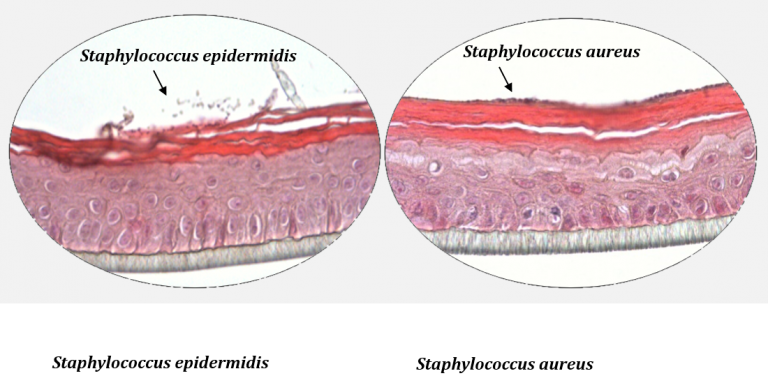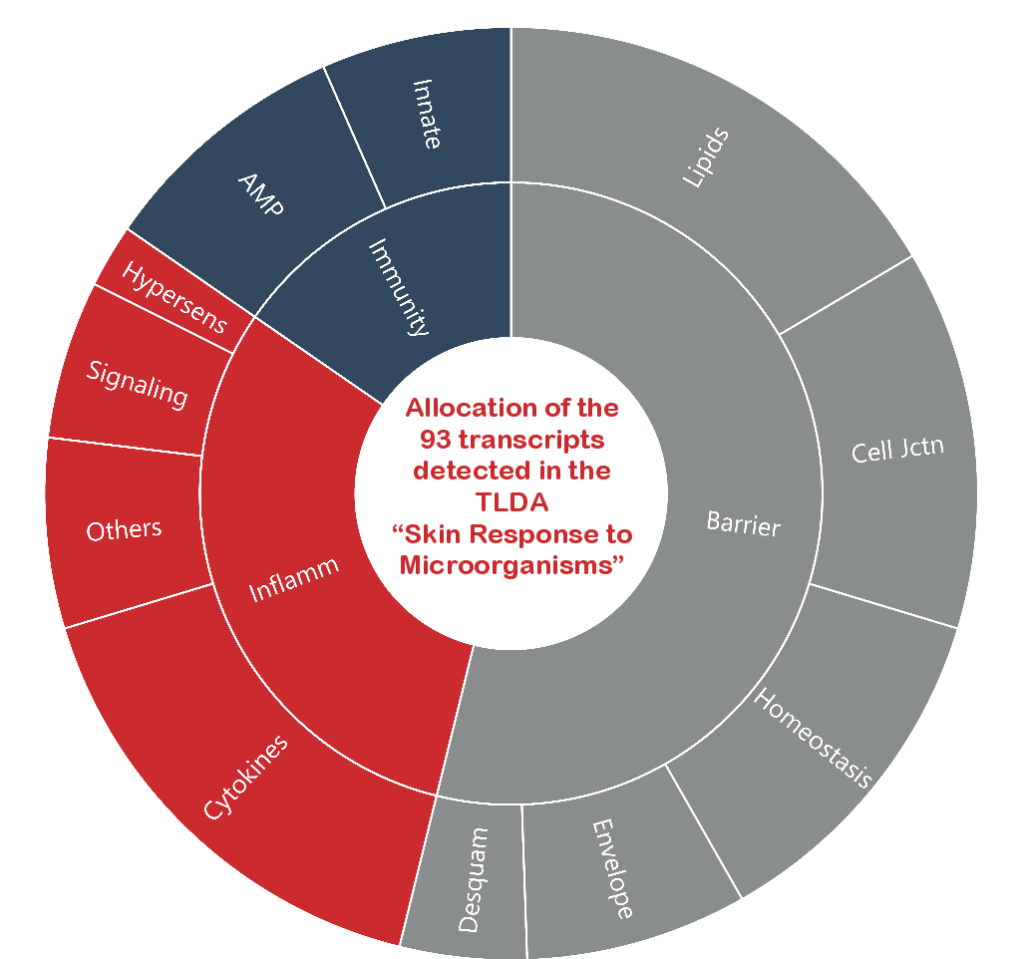
The cutaneous flora and its diversity is beneficial and even essential to preserve an healthy skin. In its MicroBIOS Platform, StratiCELL colonizes its 3D reconstructed human epidermis with the major cutaneous microbial strains such as Staphylococcus aureus, Staphylococcus epidermidis, Cutibacterium acnes, or Malassezia furfur.
The MicroBIOS Platform allows StratiCELL to define the efficacy of active ingredients
- to influence the growth of microorganisms,
- and to influence the epidermal response to this infection3D

